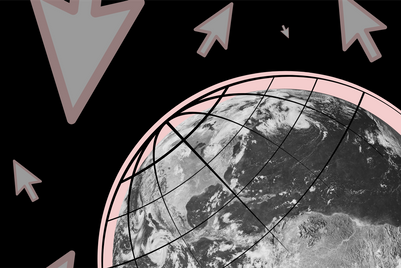
The Publicis Groupe-owned global media agency indicated that "these events had immediate consequences for advertising in the affected markets" and pared its 2011 adspend forecast to $471billion.
In Egypt – by far the largest ad market to be caught up in the Middle Eastern uprisings – ZenithOptimedia said that "there was almost no advertising on television during the revolution", and in the aftermath advertisers have been very careful about the content and placement of their messages.
The agency said it did not expect these shocks to derail the global recovery in the long term, however, it expects some of the missing advertising to reappear later in the year, followed by strong growth in these markets in 2012 thanks to the easy comparison with the first quarter of this year.
Japan is forecast to shrink 4.1 per cent this year then grow 4.6 per cent next year, while Egypt follows this year’s 20 per cent drop with a 12.1 per cent recovery in 2012.
The agency has increased its 2012 forecast from the 5.2 per cent it indicated in December to 5.8 per cent.
This it said is partly the result of the rebound in Japan and the Middle East, and partly thanks to further strengthening in Western and Central & Eastern Europe, where advertisers are becoming "more confident of the long-term economic prospects".
The agency said that the large disparity in growth rates between developed and developing markets will continue.
It forecast North America to grow by an average of 3.1 per cent a year between 2010 and 2013 and Western Europe to grow by 3.5 per cent.
Japan would grow just 0.7 per cent a year, though this obscures the big drop in 2011 followed by the recovery of lost ground over the next two years.
It also forecast just 0.1 per cent annual growth in the Middle East, as advertisers tread carefully amid political instability.
But Latin America is set to grow by 8.2 per cent a year, Central & Eastern Europe by 12.4 per cent, Asia-Pacific by 6.6 per cent, and Asia Pacific excluding Japan to grow by 10.2 per cent.
Developing markets – which it defined as everywhere outside North America, Western Europe and Japan – will increase their share of the global ad market from 30.9 per cent in 2010 to 35.1 per cent in 2013.
ZenithOptimedia said there are now two ‘developing’ markets in the world’s top ten ad markets, but there will be three in 2013. China (which it forecast would grow at an average 13.6 per cent a year to 2013) will overtake Germany (which would grow at an average 2.4per cent) to become the world’s third-largest ad market in 2011 and stay at that position throughout the forecast period.
China is currently just over half (54 per cent) the size of Japan, the second-largest ad market, and will be just over three-quarters (77 per cent) of its size in 2013.
Brazil (with 15.4 per cent annual growth) will overtake France (with 2.9 per cent) to take sixth place in 2011. Russia (23.3 per cent growth) will rise from twelfth place in 2010 to tenth in 2011, eighth in 2012, and then seventh in 2013.
The agency said that the sheer size of the US – 3.5 times the next-largest market - means it will contribute the most new ad dollars to the global market over the next three years ($14.2 billion), despite its slow growth.
However, the next five largest contributors are all developing markets: China (which contributes almost as much as theUS ($10.8 billion) Russia ($6.9 billion), Brazil ($3.3 billion), India ($2.5 billion) and Indonesia ($2.4 billion).
Overall, developing markets will contribute 62 per cent of new ad dollars over the next three years.
The network also expects the internet will overtake newspapers to become the world’s second-largest advertising medium during 2013. The agency indicated that this is the first time this has fallen within its forecast period.
Newspaper ad expenditure was still 51 per cent larger than internet ad expenditure in 2010, but newspaper expenditure is shrinking by 1.4 per cent a year as circulations continue to fall in developed markets, and readers migrate to the internet.
Internet advertising continues to grow at "breakneck pace", at a forecast average rate of 14.4 per cent a year between 2010 and 2013.
The agency forecast is that newspaper ad expenditure will fall from $95.2 billion in 2010 to $91.2 billon in 2013, while internet ad expenditure rises from $63 billon to $94.5 billion over the same period.
This year display advertising has taken over from search as the main driver of internet ad growth, according to the agency.
Display, broadly defined to include online video and social media, has been invigorated by fast-growing sectors.
The agency said that affordable, do-it-yourself tools to create streaming video ads have opened online video to small and local advertisers.
Social media sites now attract huge audiences, though click-through rates and therefore costs are often very low. ZenithOptimedia said it expects global display ad expenditure to grow at an average of 16.4 per cent a year to 2013, while paid search grows by 12.8 per cent and classified by 10.2 per cent.
Television remains by far the largest medium and is continuing to increase its market share. Television attracted 40.4 per cent of global ad expenditure in 2010, up from 37.3 per cent five years earlier, and is expected to account for 41.7 per cent in 2013.
According to the agency bigger and higher-quality displays, more channels delivered by digital television, and the convenience of PVRs mean people are watching more television than ever.
It forecasts global television ad expenditure will rise from $180.3 billion in 2010 to $216 billion) in 2013.


.jpg&h=334&w=500&q=100&v=20250320&c=1)



.png&h=334&w=500&q=100&v=20250320&c=1)

.png&h=334&w=500&q=100&v=20250320&c=1)

.png&h=334&w=500&q=100&v=20250320&c=1)




.jpg&h=268&w=401&q=100&v=20250320&c=1)
.jpg&h=268&w=401&q=100&v=20250320&c=1)
.png&h=268&w=401&q=100&v=20250320&c=1)

